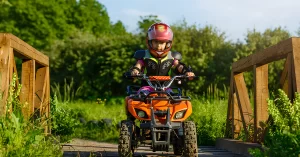
Germanium optics are essential in optical systems designed to operate in the infrared (IR) spectrum. Due to their exceptional transmission properties in the IR range, particularly between 2 and 14 microns, germanium components have become the go-to solution for thermal imaging, surveillance, spectroscopy, and other high-performance applications. Industries such as aerospace, defense, medical imaging, and industrial automation rely heavily on the precision and reliability of germanium optics to enhance the accuracy and effectiveness of their systems.
This article delves into germanium optics’ unique properties, widespread applications, and advantages over other optical materials.
Properties of Germanium Optics
Germanium is a crystalline material known for its superior infrared transmission and thermal stability. It provides excellent optical clarity in the mid-wave infrared (MWIR) and long-wave infrared (LWIR) regions, making it an ideal choice for applications requiring precise IR imaging. Unlike other materials, such as glass, which lose transparency in the IR spectrum, germanium remains highly transmissive, ensuring clear and accurate data capture.
A key feature of germanium is its high refractive index, which enables efficient light focusing and minimal signal loss. This makes germanium lenses ideal for systems where accurate light manipulation is essential. Moreover, germanium is resistant to environmental factors like moisture, dust, and corrosion, increasing its value for demanding applications.
Applications of Germanium Optics
Thermal Imaging and Surveillance Systems
Germanium optics are at the heart of thermal imaging cameras used in various fields, including military operations, search and rescue missions, and firefighting. These cameras detect heat signatures and visually represent temperature differences, even in complete darkness or harsh environmental conditions. With their ability to transmit long-wave infrared light, Germanium lenses allow these systems to capture high-resolution images with exceptional clarity.
Thermal surveillance cameras installed at airports, borders, and industrial sites depend on germanium optics to ensure reliable monitoring day and night. The durability and optical precision of germanium make it a top choice for these mission-critical systems.
Aerospace and Defense
Germanium optics play a pivotal role in aerospace and defense applications, where infrared technology is used for target acquisition, navigation, and missile guidance. Fighter jets and drones have IR sensors and cameras that rely on germanium lenses to detect objects and identify targets in various weather conditions. In these applications, germanium optics’ lightweight yet robust nature ensures high performance without adding unnecessary weight to the equipment.
Furthermore, the high refractive index of germanium allows for compact lens designs, making it easier to integrate these components into space-constrained military systems.

Medical Imaging and Diagnostics
In medicine, germanium optics are used in specialized diagnostic equipment, such as infrared spectroscopy devices and thermal imaging cameras. Without invasive procedures, these devices help healthcare professionals detect abnormalities, including vascular disorders and skin temperature variations. Germanium optics ensure the accuracy and efficiency of these devices by delivering high-resolution images and precise measurements.
Industrial Automation and Process Control
Germanium optics also play a crucial role in industrial automation, where they are used for non-contact temperature measurement and quality control. Infrared sensors equipped with germanium lenses can monitor the temperature of machinery, pipelines, or furnaces to detect anomalies before they lead to system failures. Additionally, manufacturing facilities use IR cameras with germanium optics for product inspection, ensuring that goods meet quality standards.
Advantages of Germanium Optics
Germanium optics offer several benefits over other materials, particularly for infrared systems. Their high transmission in the MWIR and LWIR regions ensures accurate data capture, while their low dispersion reduces chromatic aberration, improving image quality. Germanium’s thermal stability makes it suitable for environments with extreme temperature variations, as it maintains consistent performance without distortion or signal loss.
Additionally, germanium optics can be coated with anti-reflective layers to enhance transmission further and reduce glare, making them even more effective in high-performance systems. The material’s natural resistance to environmental factors also ensures long-term durability, minimizing maintenance needs and operational costs.
Conclusion
Germanium optics have become indispensable in fields that rely on infrared technology, from aerospace and defense to medical imaging and industrial automation. Their exceptional infrared transmission, thermal stability, and environmental resistance make them the preferred choice for demanding applications. Whether enabling precise target acquisition in military systems or enhancing thermal imaging in healthcare, germanium optics deliver unparalleled performance. With advances in manufacturing, the demand for high-quality germanium lenses and windows continues to grow, promising even greater innovations in infrared technologies.







